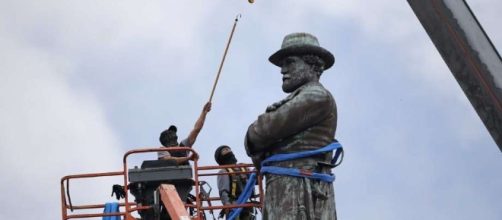When the city of new orleans decided to take down public statues of Confederate war heroes, the decision touched off a controversy over what some saw as the erasure of history and what others call a reevaluation of an unsavory period in which the “lost cause” of the Confederacy was celebrated. New Orleans Mayor Mitch Landrieu, now that the removal of the statues is a fait accompli, laid out the reasons for the decision. Landrieu made a number of compelling points.
After celebrating the diversity of New Orleans comes the sordid side of its history
New Orleans, Mayor Landrieu noted, is one of the most richly diverse cities in North America. But the city also had a sordid history based on racism and slavery. It was a port that received slave ships from Africa and was one of the biggest markets in which human beings were bought and sold in the old south. New Orleans saw lynchings, “separate but equal,” and the savage beatings of freedom riders. These were part of the history of the city as well, yet there exist no monuments commemorating them.
The Confederate monuments as a celebration of the ‘lost cause’ and white supremacy
Landrieu suggested that the statues that have been removed from public spaces in New Orleans were not celebrations of the particular men depicted.
Rather they commemorated the “lost cause,” a mythos created in the wake of the Civil War that emphasized the glory of the Confederacy and the heroism of its soldier without mentioning that the breakaway country was based on racism and slavery. To celebrate Confederate heroes is to do the same for the cause they fought for.
A more expansive view of history of New Orleans
Mayor Landrieu concluded his remarks with the observation that the 300-year history of New Orleans is more than the “4-year brief historical aberration that was called the Confederacy.” The removal of those statues, an affront to the city’s African American residents, provides an opportunity to reevaluate how New Orleans sees its history and to erect symbols that are more representative of that town’s story.
Not to praise the Confederacy nor even to bury it but to put It in context
Landrieu likely will never convince those people who are emotionally attached to the statues that his government arranged to be removed from public spaces in New Orleans. But his reasons for expunging the city of symbols of what many believe is a period that featured evil rather than heroism are worth considering. History is always in the process of reevaluation. It might have been a good thing if the mayor had laid out his reasons before the decision to remove the statues had been taken.


